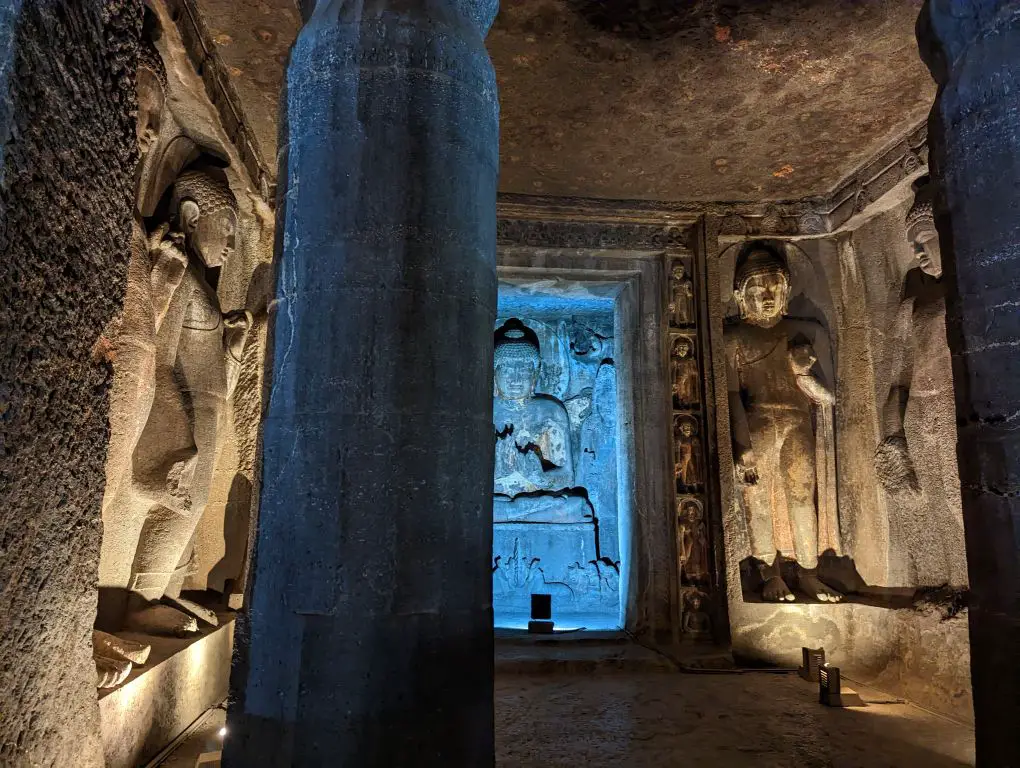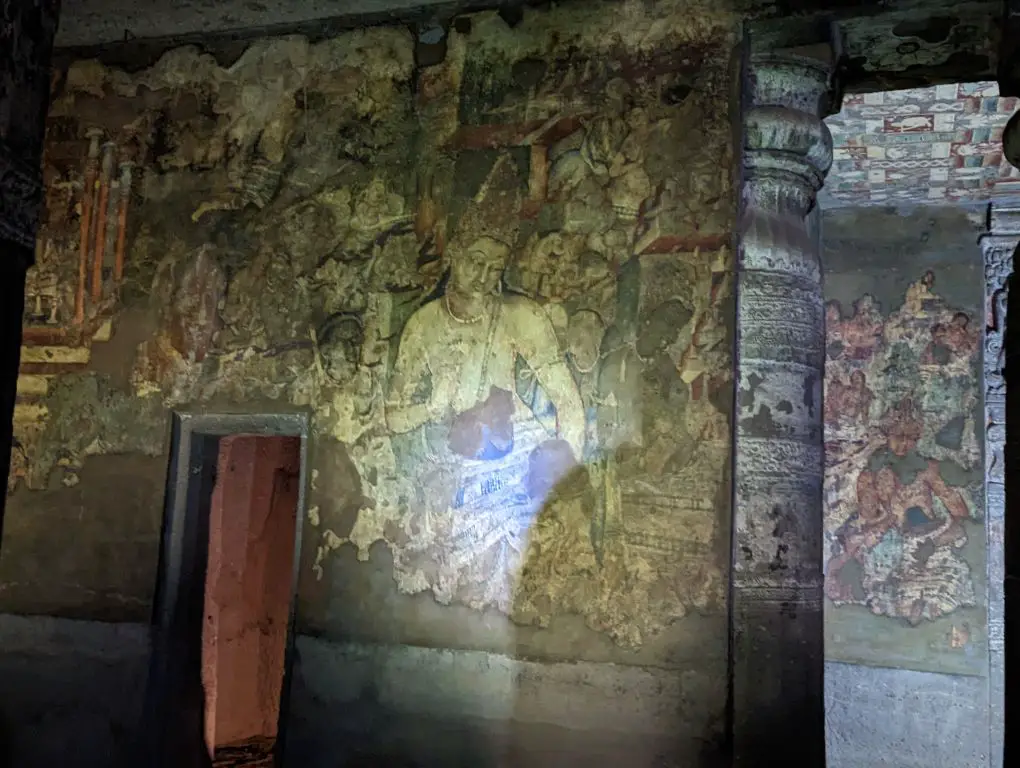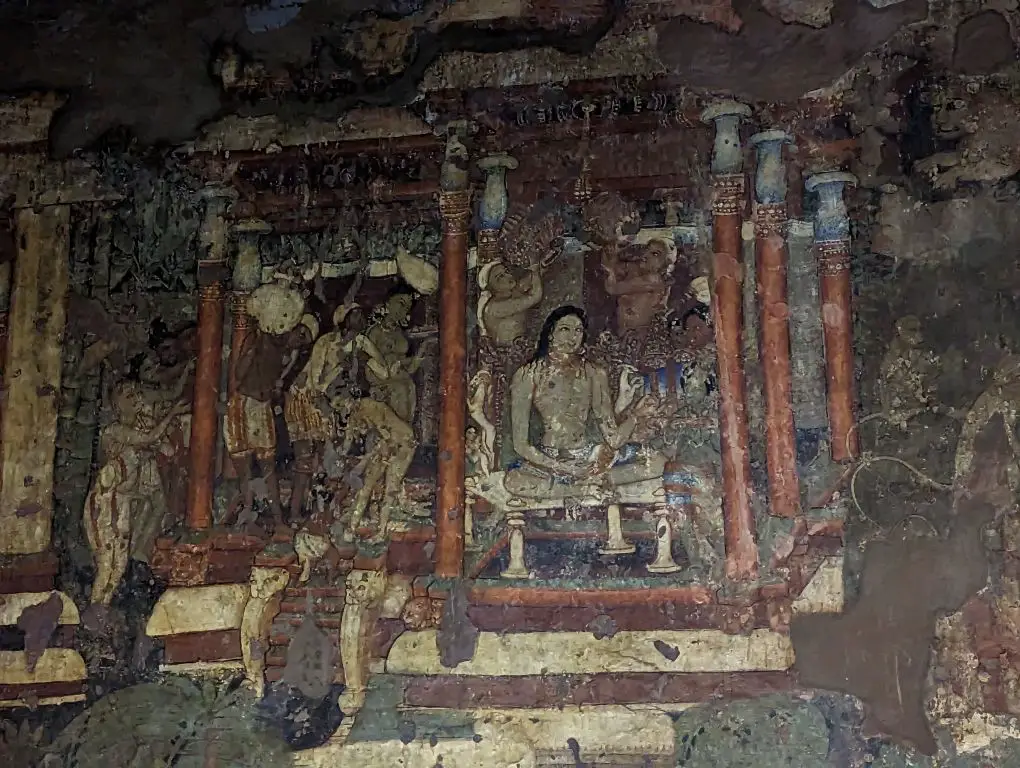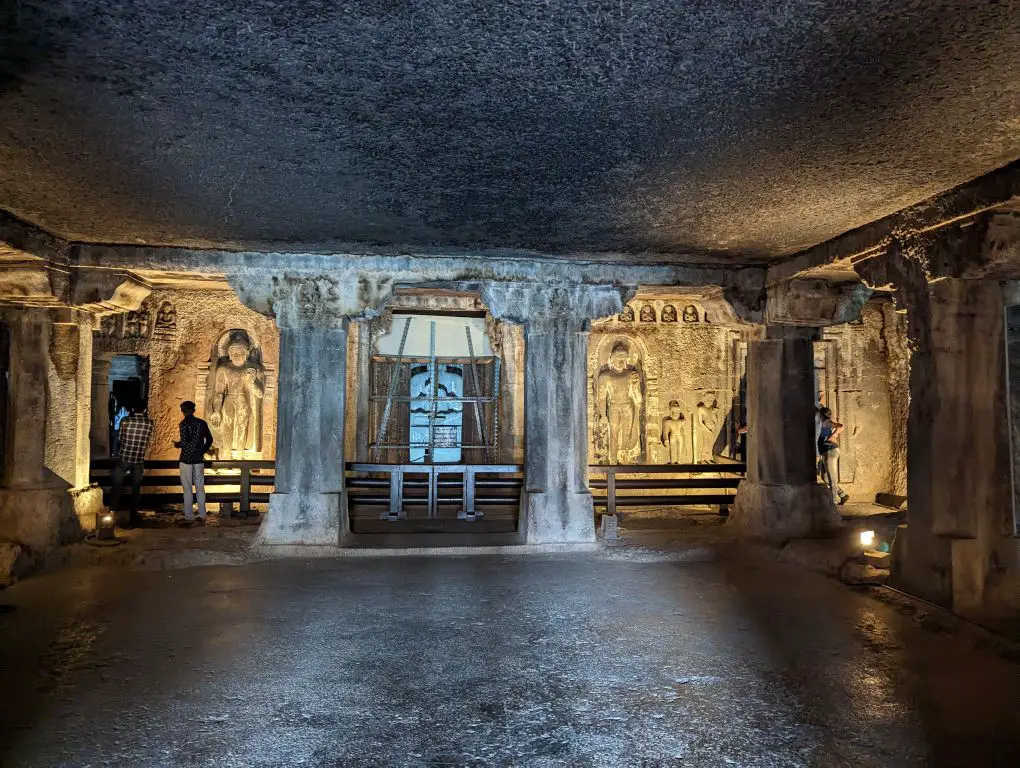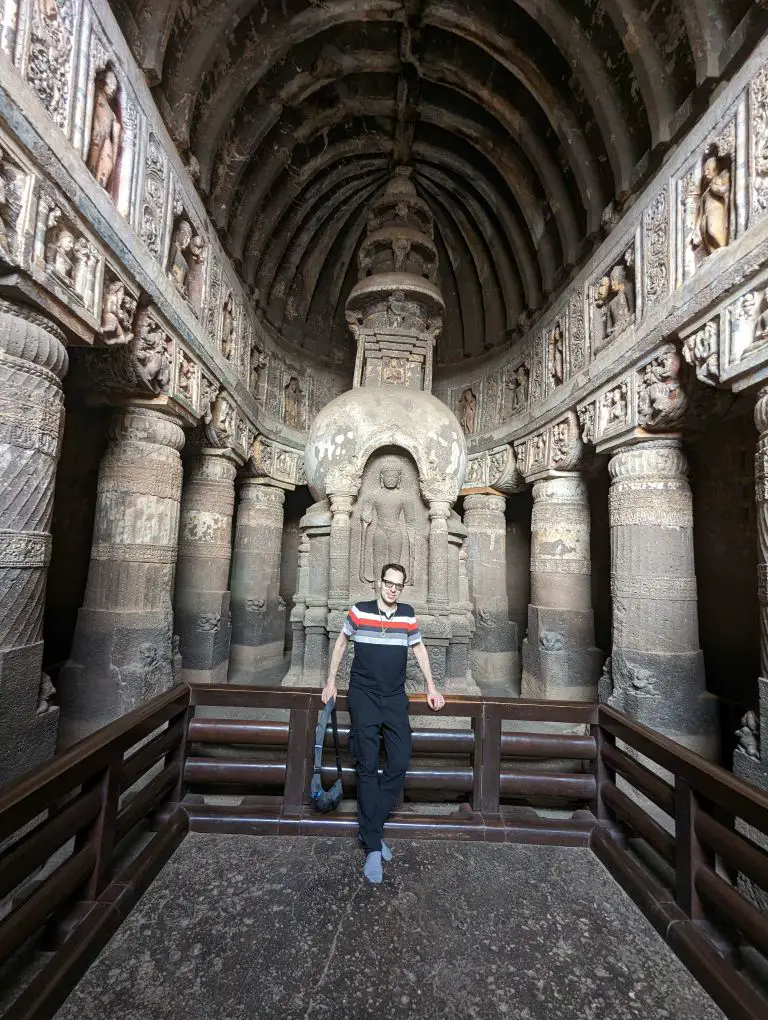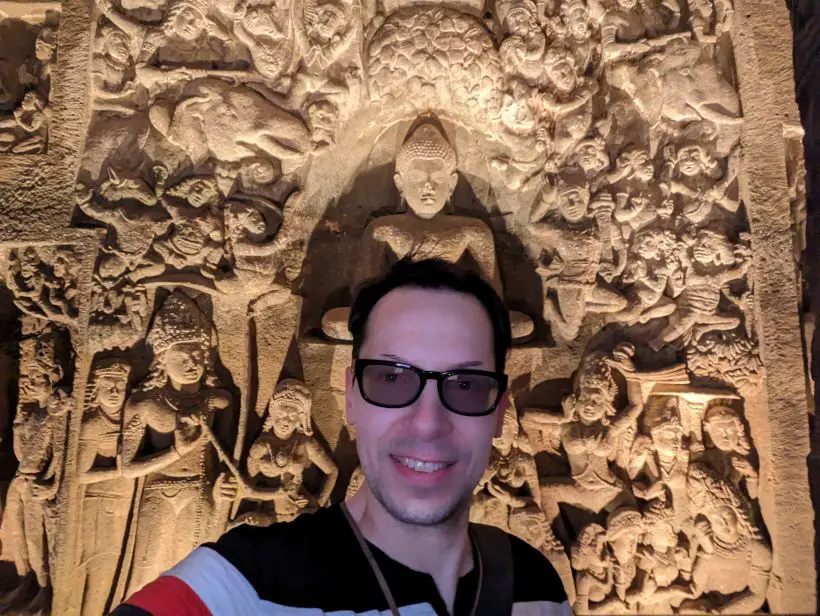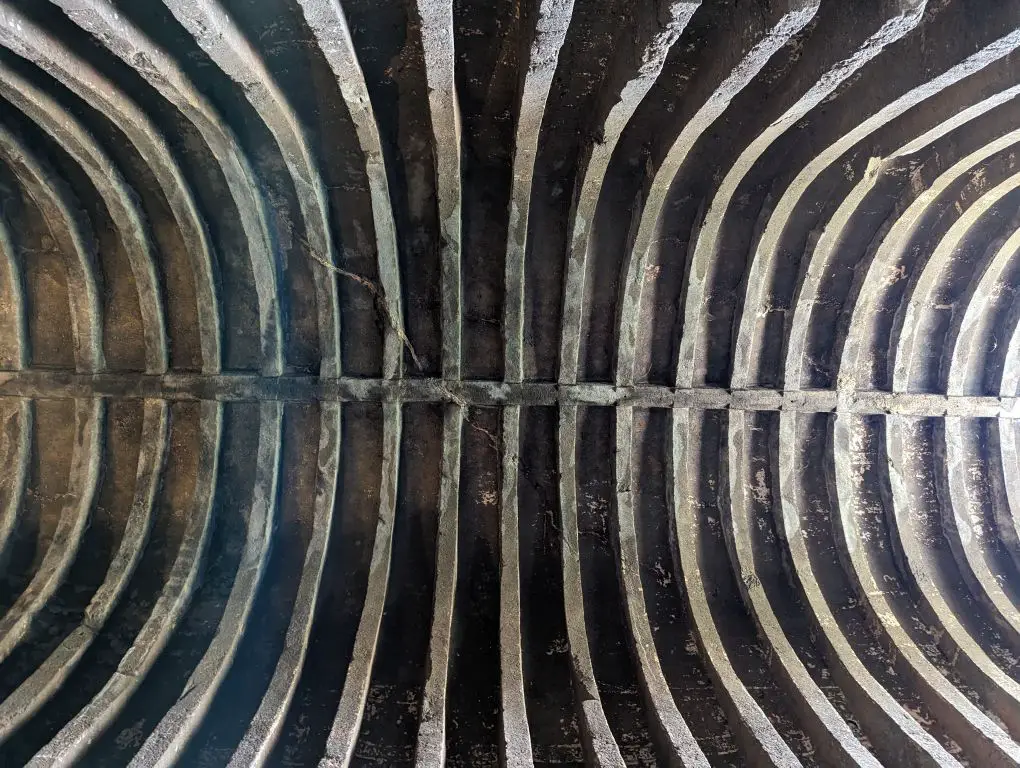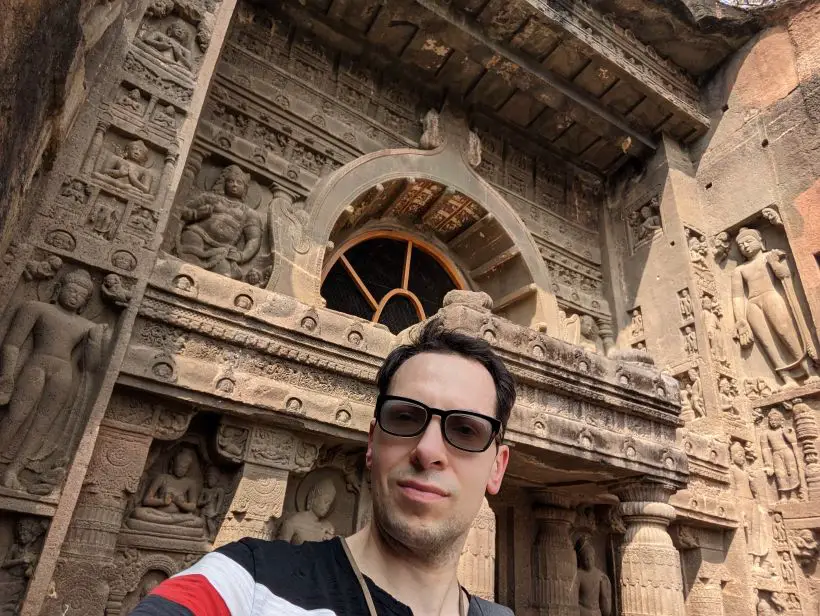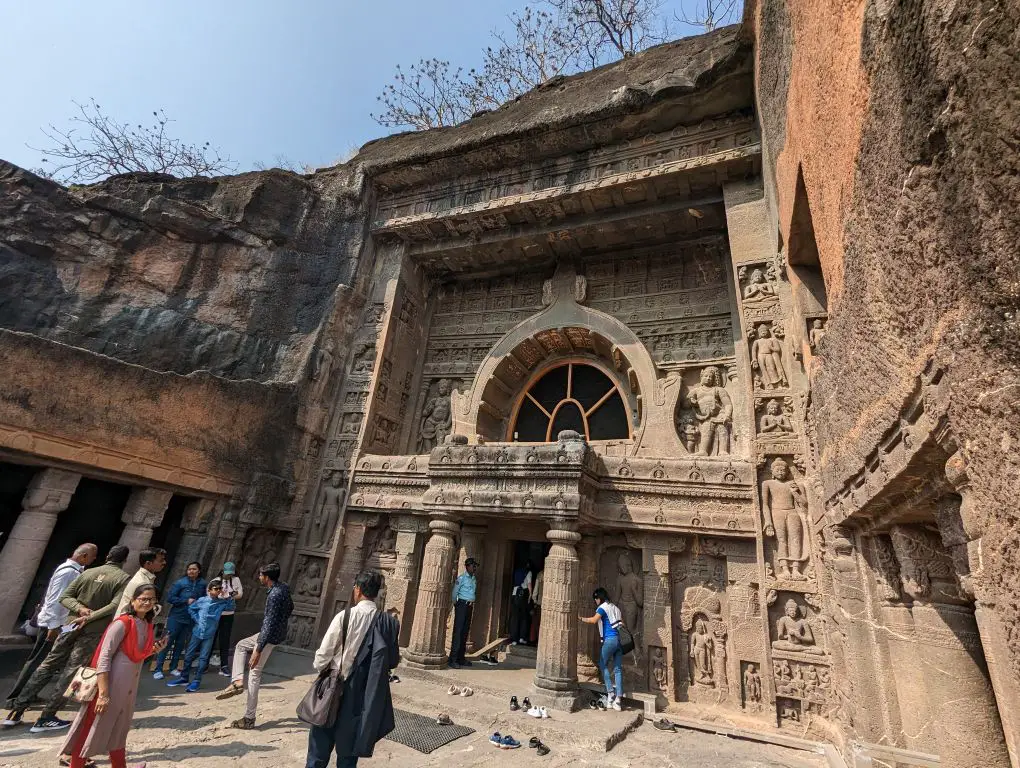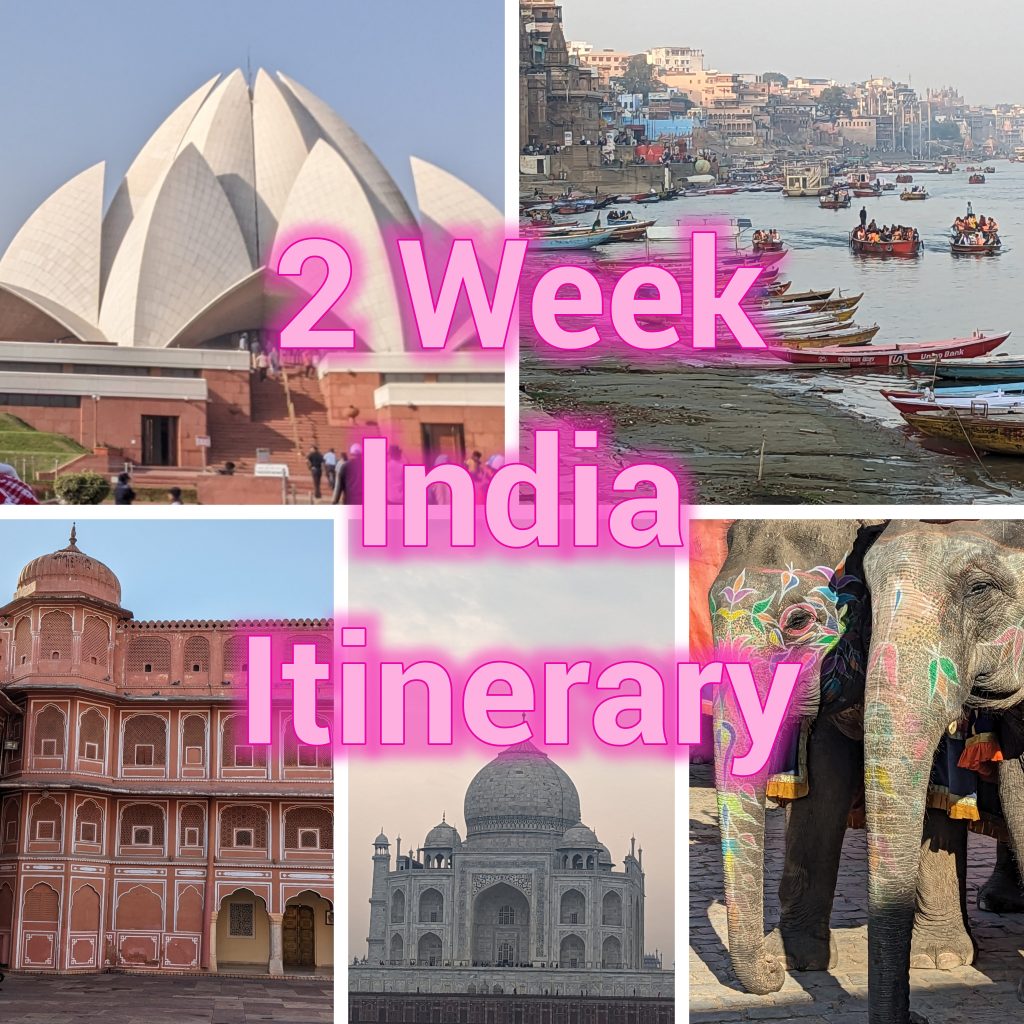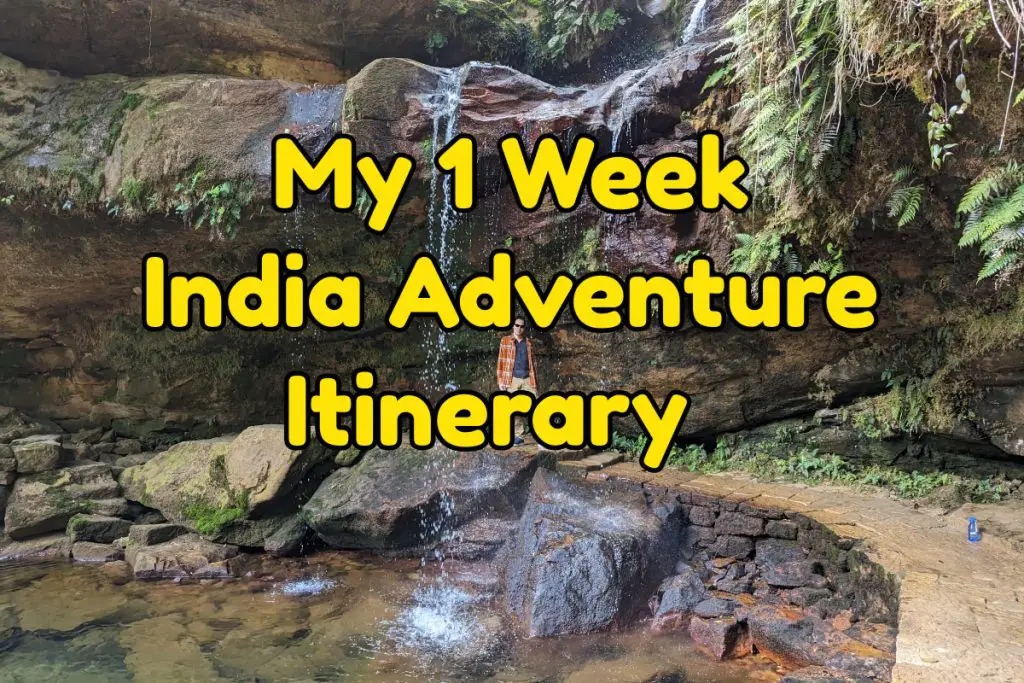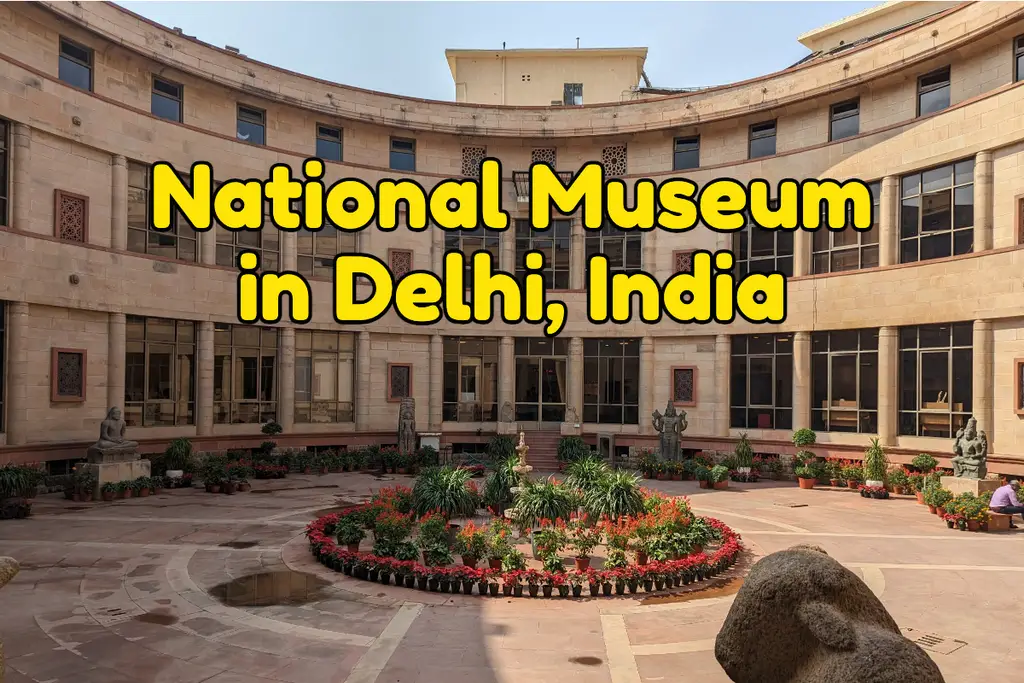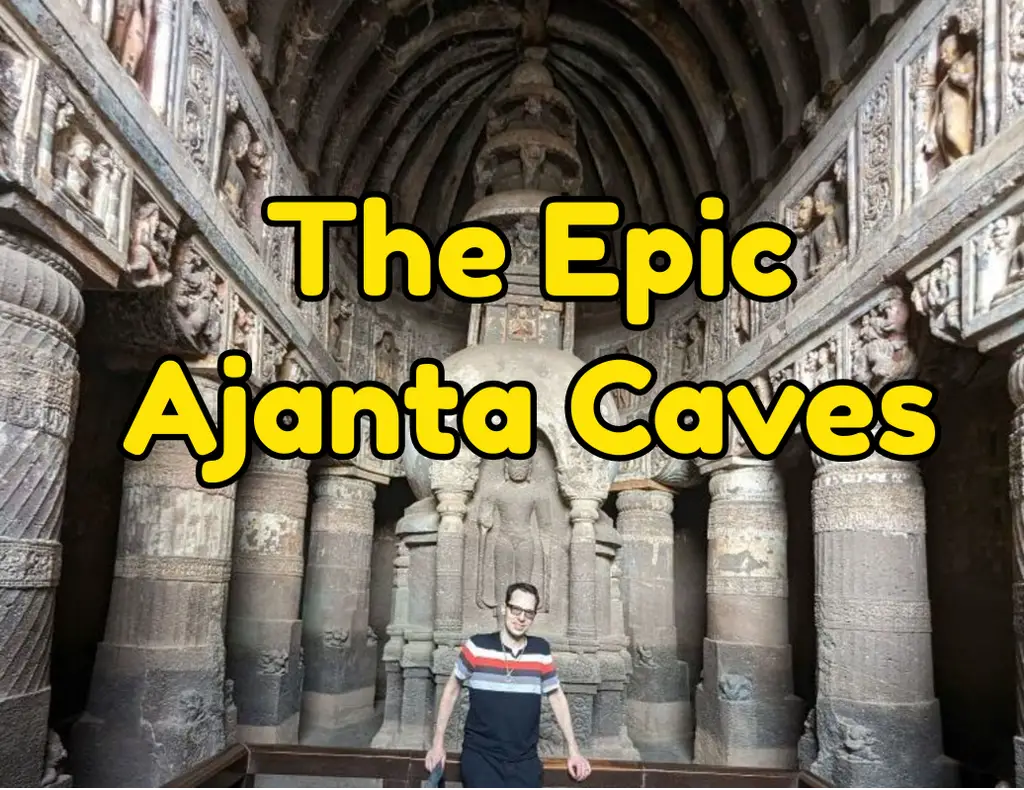
Overall Ajanta Caves are simply impressive. The Ajanta caves, located in Auranagabad India, are a set of caves that were carved out by multiple generations of monks using simple chisels over 700 years (from 200 BC to 500 AC). Some of the treasures found inside are masterpieces of Buddhist religious art such as amazing paintings and intricate sculptures.
While I never got an answer as to why they started chiseling out the caves by hand, the sheer fact that there were no caves when they started and now there are 30 caves discovered with a total of 36 foundations found so far, showcases the sheer dedication they had to this craft. I did learn that the caves were an ideal place to hide out during monsoon season and that over the centuries they carved out tiny rooms for monks who were studying there.
When I was approaching the Ajanta Caves on foot, after a brief crowded bus ride from the nearby parking lot, my curiosity started to motivate my steps. I was able to see the grand scale of the work carved into the horseshoe-shaped mountains and couldn’t wait to discover what exactly these ancient man-made artistic works held for me.
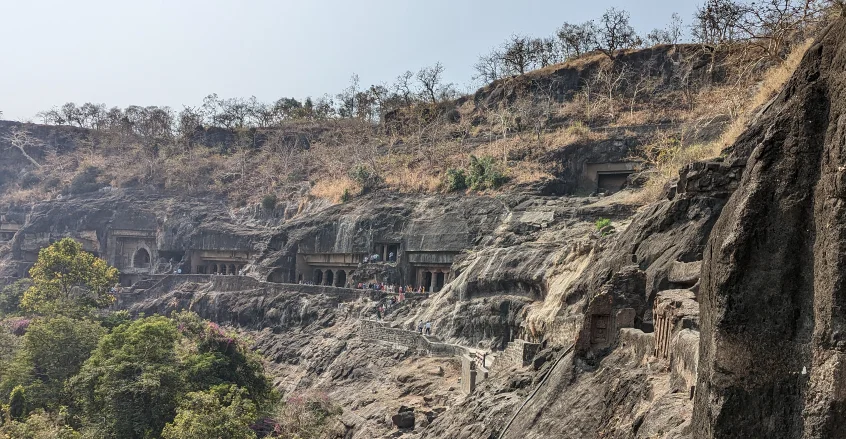
Ajanta Caves – Details
Map Location: Ajanta Caves, Maharashtra 431117, India
How to get there: Fly to Aurangabad then drive 3.5 hours to the Ajanta Caves. Being hard to get to makes them all the more special when you’re there.
Closest City: Mumbai, 8 hours away by car
Why go there: Ancient religions multi-generational handmade, artistic caves. These are unique ancient structures in the world and beg to be seen in person. Or maybe just because you visited Ellora Caves and this was a day trip from there.
When to go: Preferably when it’s not too hot, I suggest August through January.
Ajanta Cave Paintings and Sculpture
After the brief hike to the first cave, I thought it was funny that some monkeys had lined up on the hill to watch the many people walking by. I feel that seeing monkeys in the wild like that makes a place feel just a wee bit more interesting.
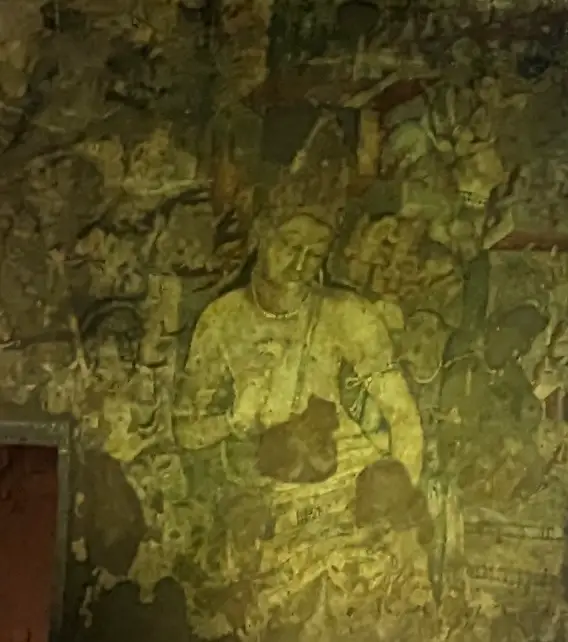
The first cave was quite an introduction to the area. I see a buddha in the rear of the cave before I even walk in. Then with my first step thoroughly inside this ancient location, I am stunned and surrounded by painted walls showing various scenes of Budha’s life. Some were only partially viewable with portions of them seeming to have been damaged or lost over time. Perhaps they could use a restoration. This being the first cave that I went into, it set the bar and defined a brief pattern for the next few beautiful caves.
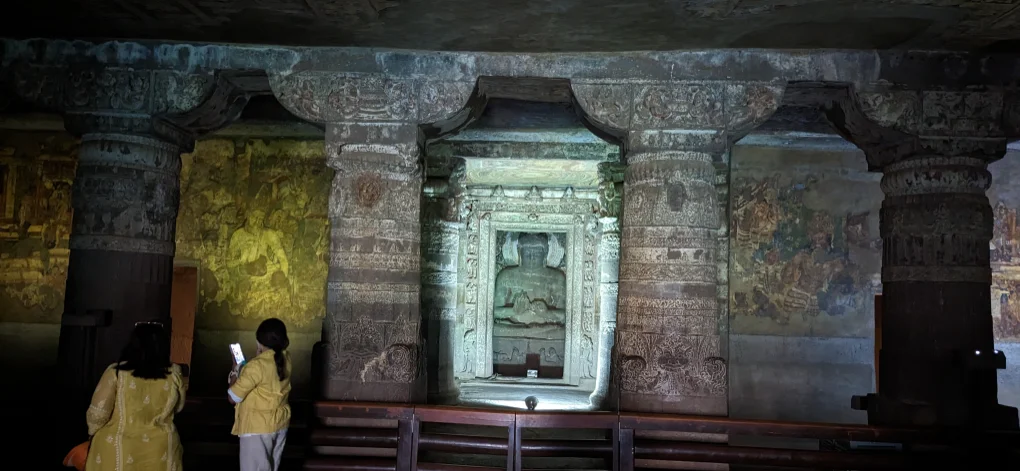
The next series of caves were much plainer and provided simple housing for monks who were learning the ways of their Buddhist religion. Buddhist practices highlight simplicity, so the rock walls were simply smoothed without much decoration. The only exception was when Buddha was sitting in the room. Buddha was no longer by himself, but he had 4 additional characters nearby. The next few caves were exactly the same, which I thought was shocking. Why would you spend generations hand-digging out caves to make them exactly the same?! Such is/was the Buddhist way I suppose.
Then I took some stairs up to explore a second level this second level only was available at one cave. The second level cave was phenomenal with some of the most intricately carved statues that I saw at the site. It also had what appeared to be something blocking people from touching the main statue in the back. The oddest thing to me was that the vast majority of the people did not go up these steps, so it felt like a private moment amongst the chaos that India can provide.
The Cathedral and Architecture of the Final Ajanta Caves
The last set of caves was truly my favorite part of the visit. I’ve nicknamed them the cathedrals as they had vaulted ceilings that truly stood out as unique. Walking into the first of them was a jolt to the system. After wandering in and out of caves that were plain and looked exactly the same, BOOM. Big difference and big beauty. The cathedral design had an arching ceiling that was dominant and eye-catching because you had to walk just a bit up in order to enter the cave. Once your eyes found their way down there was a large sculpture to enjoy in the center of the room – and beyond the columns on the left and right sides were amazing carvings that just could not be missed. Truly the highlight of the visit.
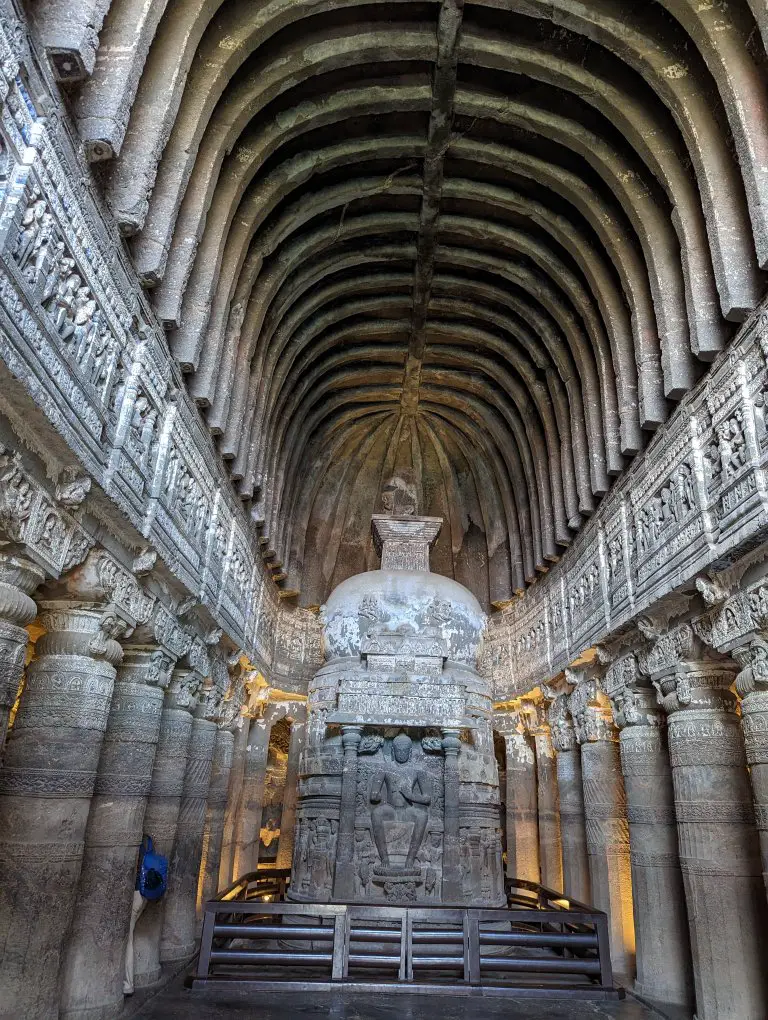
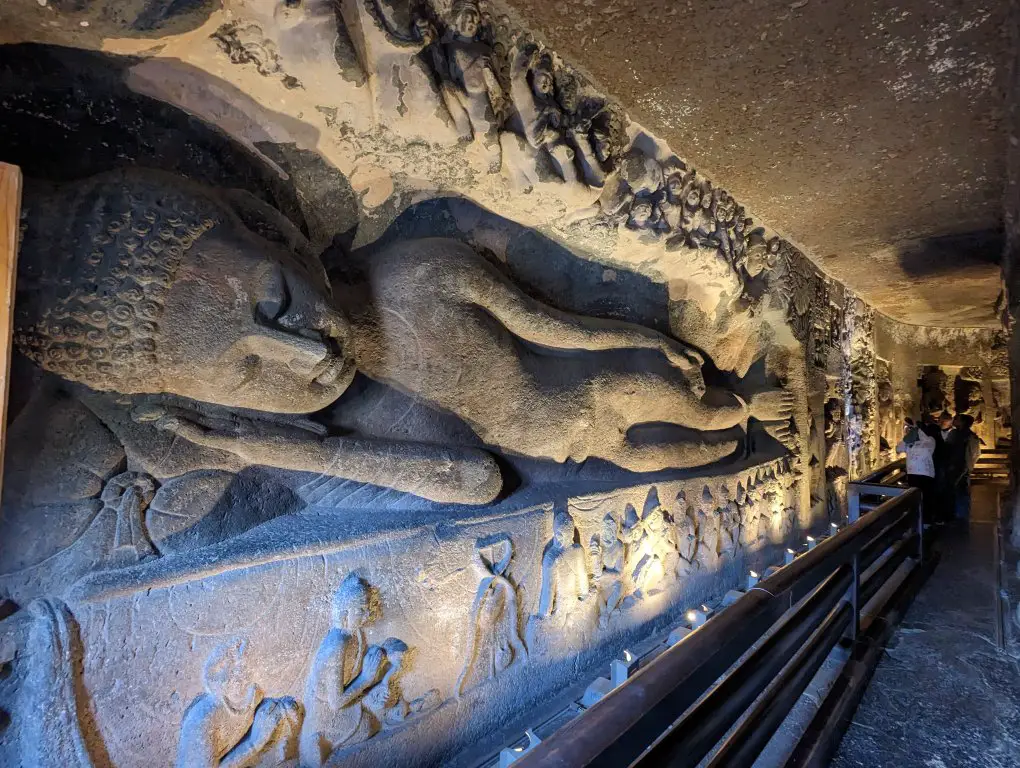
Ajanta Caves – Conclusion
There’s a simple question to be answered Is it worth it to visit the Ajanta Caves seeing how it is a 3.5-hour drive away from everything else worth seeing? If you’re into art, if you’re into remote locations and if you are in the area the answer is a resounding yes. This is one of the more unique things in the world to see and given its ancient nature it should be on your list of places to stop. It is a wonderful place to experience and I do highly recommend it, despite the journey to get there.
Ajanta Caves – Photos
